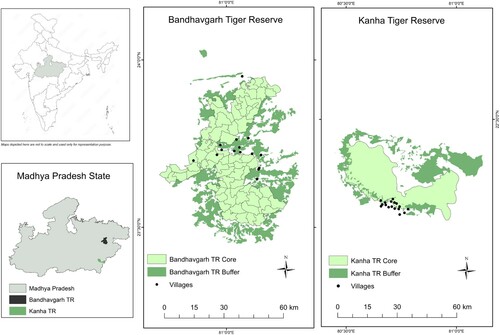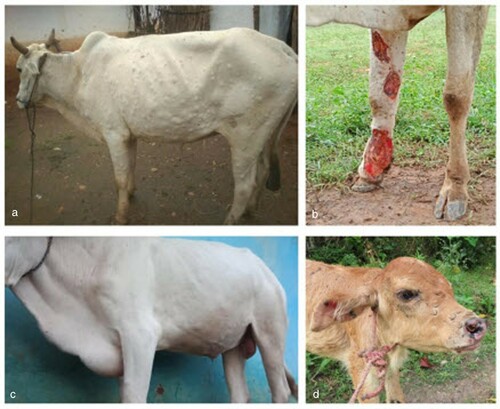Figures & data
Figure 1. Location of 32 villages affected with lumpy skin disease (LSD) located around the Kanha Tiger Reserve (KTR) and Bandhavgarh Tiger Reserve (BTR) in the state of Madhya Pradesh, India. KTR is spread over 2051 km2 and includes a 1134-km2 multiple-use buffer zone (dark green) surrounding a 917-km2 core zone (light green) of restricted human activity. There are 20 villages (black dots) in the core zone and 161 villages in the buffer zone. BTR is spread over an area of 1598 km2 with 11 villages in the core zone (716 km2) and 140 villages in the buffer area (820 km2). The inhabitants belong predominantly to the Baiga and Gond tribes.

Figure 2: Clinical lesions typical of the cases seen in an outbreak of presumptive lumpy skin disease (LSD) in native cattle (Bos indicus) and Asian water buffaloes (Bubalus bubalis) around the tiger reserves of the central Indian highlands. (a) Affected ox showing the spread of nodules on the skin; (b) excoriated wound on leg of an affected ox; (c) swelling of the brisket; (d) lesions on the head of a calf.

Table 1. Number (%) of native cattle (Bos indicus) and Asian water buffaloes (Bubalus bubalis) recorded as having clinical signs and lesions associated with lumpy skin disease (LSD) during an outbreak of presumptive LSD in and around the tiger reserves of the central Indian highlands.
